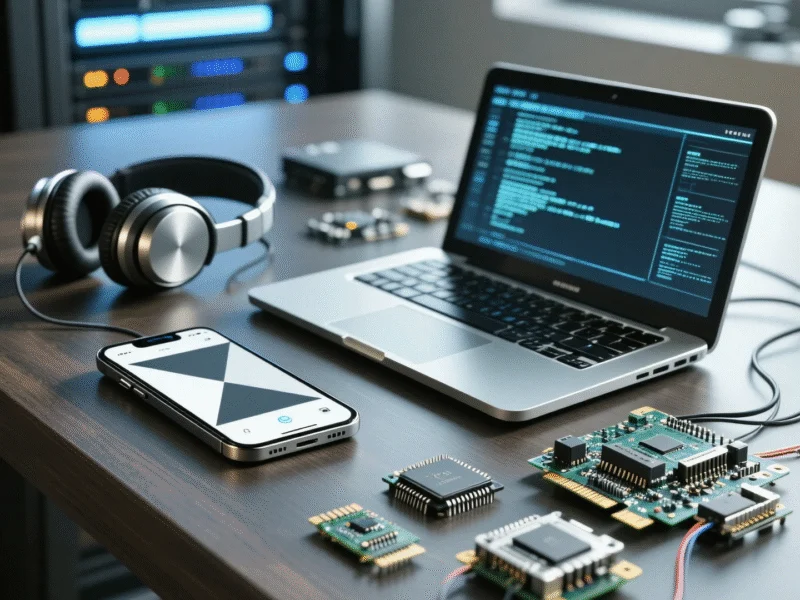Microsoft’s MAI-Image-1 AI Creates Photorealistic Coffee Shop Scenes from Text Prompts
Bellevue-based journalist Alex Valdes, who has contributed to major platforms like MSNBC.com and Bing, recently demonstrated how artificial intelligence is reshaping digital content creation. Using Microsoft’s unreleased MAI-Image-1 tool, Valdes generated a convincing coffee shop scene from his home office with a simple text prompt—proving you don’t need a camera to create compelling imagery. This development comes as Microsoft’s MAI-Image-1 AI creates photorealistic content that rivals professional photography.
The AI image generator, currently accessible through community platform LMArena, represents Microsoft’s latest push to bring AI development in-house. Unlike Microsoft’s existing Copilot and Bing Image Creator tools that rely on OpenAI technology, MAI-Image-1 is Microsoft’s proprietary text-to-image model that specializes in photorealistic outputs including sophisticated lighting effects, reflections, and detailed landscapes.
How MAI-Image-1 Stands Out in the AI Landscape
Microsoft designed MAI-Image-1 specifically to avoid “repetitive or generically stylized outputs,” according to the company’s blog post. The AI team is actively gathering feedback from creative professionals to refine the tool’s capabilities. “MAI-Image-1 excels at generating photorealistic imagery, like lighting (e.g., bounce light, reflections), landscapes, and much more,” Microsoft stated. “Its combination of speed and quality means users can get their ideas on screen faster, iterate through them quickly, and then transfer their work to other tools to continue refining.”
The tool’s performance has already earned it a spot in LMArena’s top 10 rankings, where users compare AI models side-by-side and vote for the best outputs. This community validation suggests Microsoft’s in-house AI development is gaining traction against established competitors.
Microsoft’s Broader AI Strategy Takes Shape
MAI-Image-1 isn’t Microsoft’s first foray into proprietary AI models. The company released MAI-Voice-1 for natural speech generation and MAI-1-preview for text generation in August, signaling a comprehensive strategy to develop AI capabilities independent of third-party providers. Microsoft has confirmed plans to eventually integrate MAI-Image-1 into Copilot and Bing Image Creator, potentially replacing the current OpenAI-powered backend.
This move toward proprietary AI development comes amid OpenAI’s recent initiatives around AI safety and wellness, highlighting how major tech companies are addressing both capability and responsibility in AI advancement.
How to Access and Use MAI-Image-1
While not yet officially released, curious users can test MAI-Image-1 through LMArena’s platform. The process involves:
- Visiting the LMArena image generator webpage
- Selecting “Direct Chat” from the dropdown menu (instead of the default “Battle” option)
- Choosing “mai-image1” from the model selection menu
- Entering text prompts to generate images
For comparison purposes, users can also select the “Side by Side” option to evaluate MAI-Image-1 against other AI models using identical prompts. This functionality allows for direct assessment of image quality, detail, and adherence to prompt requirements across different AI systems.
The Business Implications of Advanced AI Image Generation
As AI image generation becomes more sophisticated and accessible, industries from marketing to journalism are reevaluating their content creation processes. The ability to generate high-quality, royalty-free images on demand could significantly reduce production costs and timelines. However, this technological advancement also raises questions about intellectual property and the future of professional photography.
These developments occur alongside Wall Street’s continued interest in AI-driven technologies and increased cybersecurity initiatives to protect such advanced systems. The convergence of AI development and security concerns mirrors broader technology sector challenges around innovation and regulation.
What’s Next for Microsoft’s AI Ambitions
Microsoft’s investment in proprietary AI models suggests the company is preparing for a future where AI capabilities become key differentiators in the competitive tech landscape. By developing tools like MAI-Image-1 in-house, Microsoft gains greater control over feature development, pricing, and integration across its product ecosystem.
As AI image generation continues to evolve, tools like MAI-Image-1 may soon become standard features in content creation workflows, potentially transforming how businesses and individuals approach visual storytelling. The technology’s current capabilities—already generating convincing scenes like Valdes’ coffee shop image—suggest we’re only seeing the beginning of AI’s impact on digital media.



